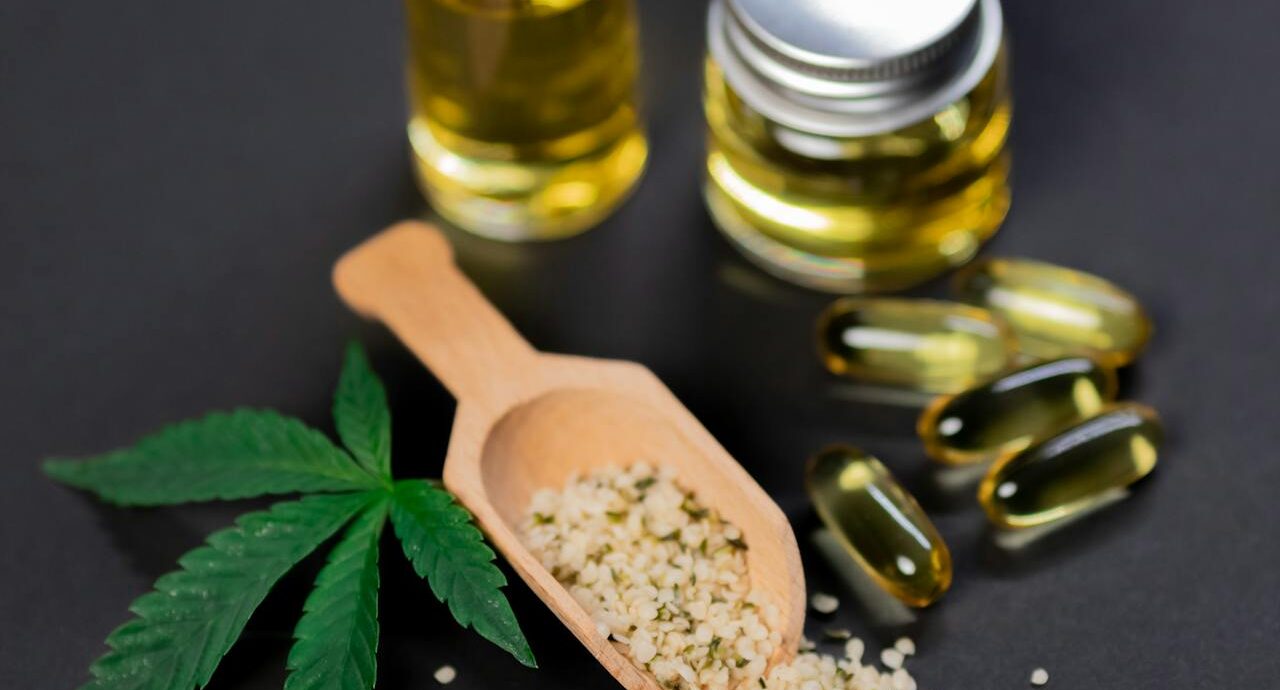Introduction to 2046 FV Strain
The 2046 FV strain is a hybrid cannabis variety that has gained prominence among cultivators due to its exceptional attributes and high yields. This strain is a product of careful breeding, combining potent genetics that contribute to its desirable growth characteristics. The genetic lineage typically includes notable parent strains known for their resilience and productivity, making 2046 FV strain particularly appealing to both novice and experienced growers alike.
One of the distinguishing characteristics of the 2046 FV strain is its remarkable adaptability, allowing it to thrive in a variety of growing environments, be it indoors or outdoors. This versatility enhances its appeal, as growers can easily integrate it into different setups without facing significant challenges. The strain exhibits robust growth patterns, ensuring that growers can achieve optimal results, even under less-than-ideal conditions.
The flavor profile of the 2046 FV strain is another compelling aspect, often praised for its unique blend of sweet and earthy notes. This enticing aroma not only attracts consumers but also enhances the overall growing experience, encouraging cultivators to persist in their cultivation efforts. Moreover, the strain tends to exhibit a balanced cannabinoid content, typically offering a well-rounded effect that caters to a broad audience, from medicinal users to recreational enthusiasts.
In addition to its favorable growing conditions and appealing sensory attributes, the 2046 FV strain is recognized for its potential for high yields. This means that growers can expect a significant return on investment, making it a financially viable option. As aspiring cultivators explore how to grow 2046 FV strain, they will appreciate the strain’s ability to deliver results that meet both their qualitative and quantitative goals.
Understanding the Genetics
The 2046 FV strain is a fascinating hybrid that combines the characteristics of several parent strains to produce distinctive traits, making it a popular choice among cultivators. Understanding the genetics of the 2046 FV strain helps to appreciate its unique growth behavior, potency, and yield potential. This hybrid is primarily derived from the fusion of sativa-dominant strains, which contributes to its energetic and uplifting effects, as well as indica varieties, which impart hardiness and resilience to the plant.
The parent strains of 2046 FV often include renowned varieties known for their rich flavor profiles and robust growth patterns. By analyzing its lineage, growers can better understand how to grow 2046 FV strain effectively, as each genetic contribution plays a significant role in determining the requirements for optimal care. For instance, the sativa genetics may require a longer flowering period, while the indica influence can enhance the plant’s ability to adapt to various environmental conditions.
Moreover, the hybrid nature of 2046 FV not only influences growth behavior but also affects its THC and CBD ratios, thereby enhancing the plant’s psychoactive properties and medicinal benefits. This genetic complexity means that growers must tailor their cultivation techniques according to the plant’s needs, ensuring that the appropriate surroundings, nutrients, and care methods are provided. An understanding of the interplay between the different genes within the 2046 FV strain allows cultivators to optimize their strategies for achieving desired yields and crop quality.
In summary, the genetics of the 2046 FV strain are fundamental to mastering its cultivation. Awareness of its parent strains and how those traits manifest in growth characteristics will empower growers to foster a healthy, high-yielding plant. The more knowledge one has about these genetic components, the better equipped they will be to address the specific challenges that may arise during cultivation.
Optimal Growing Conditions for the 2046 FV Strain
The 2046 FV strain is renowned for its robustness and yield potential, making it essential to provide optimal growing conditions to maximize its growth and quality. Temperature is a crucial factor; ideally, the environment should be maintained between 70°F to 85°F (21°C to 29°C) during the day and slightly cooler at night. This temperature range supports healthy metabolic functions, ensuring the plants thrive without stressing them.
Humidity plays a significant role as well, particularly during different growth stages. In the vegetative phase, a relative humidity of 60% to 70% is advantageous, as it encourages vigorous growth. As the plants transition to the flowering stage, lowering the humidity to around 40% to 50% helps prevent mold and promotes resin development, which is essential for enhancing the strain’s potency and flavor profile.
Light cycles are another critical component when learning how to grow 2046 FV strain effectively. Indoor growers should provide 18 hours of light and 6 hours of darkness during the vegetative phase. When shifting to flowering, it is essential to alter the light cycle to 12 hours of light and 12 hours of darkness. This change signals the plants to produce flowers, significantly influencing yield and cannabinoid profile.
Soil composition also contributes to thriving plants. The 2046 FV strain flourishes in well-draining soil with a balanced nutrient profile. A mix containing organic matter, such as compost and worm castings, enhances nutrient availability and microbial activity, supporting plant health. Additionally, using a pH range of 6.0 to 7.0 will help ensure nutrient uptake is optimized.
Different growing environments, whether indoor, outdoor, or greenhouse setups, each present unique challenges and benefits. Indoor cultivation offers complete control over conditions, while outdoor setups can harness natural sunlight. Greenhouses, on the other hand, blend both methods, allowing for a moderated climate. Understanding these factors is key to successfully propagating the 2046 FV strain and achieving desired yields.
Nutrient Requirements
To successfully cultivate the 2046 FV strain, understanding its specific nutrient requirements is vital. This strain thrives when provided with a balanced blend of macronutrients and micronutrients, which are essential for healthy growth and optimal yield. The nutrient composition should be tailored to different growth stages: vegetative and flowering.
During the vegetative stage, the 2046 FV strain requires a nutrient mix high in nitrogen (N), as this element promotes robust leaf and stem growth. A fertilizer with a higher nitrogen ratio, such as a 3-1-2 (N-P-K) formulation, can effectively meet these needs. Additionally, incorporating amendments such as compost or well-aged manure into the soil can enhance microbial activity, further facilitating nutrient absorption. As the plants transition into the flowering phase, the focus shifts to phosphorus (P) and potassium (K). Fertilizers with a 1-2-3 ratio can be beneficial during this time, as phosphorus supports bud development while potassium strengthens plant health and resistance to disease.
Micronutrients, although required in smaller quantities, are equally important for the 2046 FV strain. Essential micronutrients like magnesium, calcium, zinc, and iron play a critical role in various physiological functions, including chlorophyll production and enzymatic processes. It is advisable to use a well-balanced nutrient solution that also includes these micronutrients, ensuring they are present throughout the plant’s lifecycle.
Feeding schedules are another crucial aspect when learning how to grow the 2046 FV strain. Regularly monitoring soil pH and adjusting nutrient applications accordingly can promote better absorption and prevent nutrient lockouts. Typically, feeding every two weeks during the vegetative stage and weekly during flowering can maximize the strain’s potential. Through diligent attention to these nutrient requirements, growers can significantly enhance the health and yield of the 2046 FV strain.
Watering Techniques
Watering is a critical aspect of cultivating the 2046 FV strain, as it directly influences the plant’s growth, health, and overall yield. The first step to effective watering is understanding when to water your plants. A common method for checking soil moisture is the finger test; by inserting a finger about one inch into the soil, you can gauge its dampness. If the soil feels dry at that depth, it is time to water. It is important to establish a consistent watering schedule, typically allowing the top inch of soil to dry out between watering sessions. This promotes a healthy root system, encouraging deeper growth and enhanced nutrient uptake.
When it comes to watering practices, aiming for even and thorough irrigation is essential. The 2046 FV strain thrives when it receives a deep watering, allowing moisture to reach the root zone evenly. This can be achieved by using a watering can or a garden hose with a gentle flow, ensuring that the soil is saturated without leading to water runoff. Additionally, watering should ideally be done in the morning or late afternoon to minimize evaporation and promote optimal absorption. Pay attention to weather conditions; during hotter months, plants may require more frequent watering compared to cooler seasons.
Over-watering is a common mistake that can severely impact the health of the 2046 FV strain. This practice can lead to root rot and nutrient deficiencies, ultimately stunting plant growth. Conversely, under-watering can stress the plants, leading to wilting and lower yields. Maintaining the right balance is key. Furthermore, using quality water enhances plant vitality. If possible, use filtered or pH-balanced water, as chlorine and other chemicals present in tap water can adversely affect plant health. By implementing these watering techniques, growers can significantly improve their success in cultivating the 2046 FV strain.
Pruning and Training Methods
When it comes to cultivating the 2046 FV strain, effective pruning and training methods are essential for optimizing its growth potential. Pruning not only helps manage the plant’s structure but also enhances light penetration and air circulation, which are crucial for healthy growth. Among the most common techniques, topping, low-stress training (LST), and high-stress training (HST) stand out as particularly beneficial for the 2046 FV strain.
Topping involves cutting the main stem just above a node, which encourages the development of multiple colas rather than a single dominant one. This technique promotes bushier growth and allows for a more even canopy, ensuring that all parts of the plant receive adequate light. For growers looking to utilize this method with the 2046 FV strain, timing is important; topping should ideally occur during the vegetative stage when the plant has reached a height of 6-8 inches.
Low-stress training (LST) is another valuable technique that involves gently bending and tying down branches to create an even canopy. This approach not only maximizes light exposure to all parts of the plant but also promotes lateral growth, allowing the 2046 FV strain to develop multiple colas. LST can be initiated during the early vegetative phase and continued throughout the growth cycle, adapting as needed.
For those willing to employ high-stress training (HST), techniques such as super cropping come into play. This method involves pinching and bending the stems to create micro-tears, promoting stronger growth and potentially leading to larger yields. While higher in risk, when done correctly, HST can significantly enhance the flowering potential of the 2046 FV strain.
In summary, understanding and applying effective pruning and training methods, such as topping, LST, and HST, can greatly contribute to maximizing the yield and overall health of the 2046 FV strain. When these techniques are employed thoughtfully, growers can achieve robust growth and optimal light distribution, resulting in a more bountiful harvest.
Pest and Disease Management
Effective management of pests and diseases is critical for cultivating a robust 2046 FV strain. Growers must remain vigilant to identify potential threats that can undermine plant health and yield. Common pests such as aphids, spider mites, and thrips are frequently encountered in cannabis cultivation. These insects can weaken plants by feeding on their sap and may also transmit harmful viruses. To prevent infestations, it is advisable to regularly inspect plants for early signs of pest activity and to maintain a clean growing environment.
For controlling these pests, organic methods are often preferred by growers aiming for sustainable cultivation of the 2046 FV strain. Introducing beneficial insects, such as ladybugs and predatory mites, can effectively reduce pest populations without harmful chemicals. Additionally, employing neem oil or insecticidal soap can be effective in managing unwanted insects while remaining environmentally friendly. Spraying these solutions during the early morning or late afternoon can minimize the likelihood of harming beneficial insects.
Diseases such as powdery mildew and root rot can also be detrimental to the 2046 FV strain. Powdery mildew is particularly problematic in humid environments, and its presence can be characterized by a white, powdery substance appearing on leaves. To prevent this, it is essential to ensure adequate air circulation within the growing area and to maintain appropriate humidity levels. Regularly checking soil moisture can significantly reduce the chance of root rot; overwatering should be avoided, and soil should be allowed to dry between watering sessions.
In addition to these preventive measures, careful monitoring and early intervention are vital for managing both pests and diseases effectively. Implementing an integrated pest management strategy that combines cultural practices, biological control, and chemical treatments—when necessary—will provide the best defense against threats to the 2046 FV strain, thereby ensuring a healthy and productive crop.
Harvesting and Curing
Harvesting and curing the 2046 FV strain is a critical phase in the cultivation process that significantly affects the final quality of the buds, particularly in terms of flavor and potency. To achieve the best results, it is crucial to determine the optimal time for harvesting. The right moment to trim your plants can be identified by observing the trichomes on the buds. When these tiny, glistening resinous structures turn milky white and some start to take on an amber hue, it signals that the plant has reached peak potency. Generally, growers should aim to harvest when approximately 70% of the trichomes are milky, and 30% are amber for the best balance of effects.
Once you’ve established that it is time to harvest your 2046 FV strain, you should use sharp, clean shears to make precise cuts. Carefully cut the branches, opting to leave some smaller leaves intact, as they can help protect the buds during the drying process. It is advisable to trim the larger fan leaves prior to drying, as this will facilitate better airflow and reduce the risk of mold.
Following the cutting process, the proper drying of the buds plays a vital role in preserving their quality. Hang the branches upside down in a dark, well-ventilated area with a controlled temperature of around 60-70°F (15-21°C) and humidity levels between 45-55%. This allows the moisture to gradually dissipate, which can take around 7 to 14 days, depending on the environmental conditions. Lastly, curing your 2046 FV strain involves storing the dried buds in airtight containers like mason jars, regularly opening them to allow fresh air in. This process enhances the flavor, aroma, and potency of the buds, completing the transformation from plant to final product.
Conclusion and Final Tips
Growing the 2046 FV strain can be a rewarding endeavor for both novice and experienced growers alike. This strain, known for its unique characteristics and resilience, requires attention to detail throughout the cultivation process. Having discussed the essential aspects of achieving a successful yield, it is crucial to revisit the key points covered—optimal environmental conditions, nutrient management, and pest control strategies.
When setting up your grow environment, remember that temperature and humidity play critical roles in the health of the 2046 FV strain. Maintaining a consistent climate not only ensures healthy growth but also enhances the final quality of the plants. Consider investing in appropriate equipment such as ventilators and dehumidifiers to regulate the conditions effectively.
In terms of nutrient management, understanding the specific requirements of the 2046 FV strain will help you avoid over-fertilization or nutrient deficiency. Utilize a tailored feeding schedule, and periodically assess your plants for signs that indicate their nutritional needs. This attentiveness will promote vigorous growth and an abundant harvest.
Pest management is another essential aspect of cultivating the 2046 FV strain successfully. By proactively monitoring for common pests and employing integrated pest management (IPM) techniques, you can protect your plants and mitigate potential loss. Regular checks and preventative measures will ensure that your growing environment remains conducive to healthy development.
Finally, sharing your experiences and results with the cannabis growing community can be incredibly beneficial. Engaging with fellow growers not only allows for the exchange of valuable insights but also fosters a supportive atmosphere for troubleshooting any challenges. In conclusion, with diligent care and a commitment to learning, you can maximize the potential of the 2046 FV strain and enjoy the fruits of your labor.












